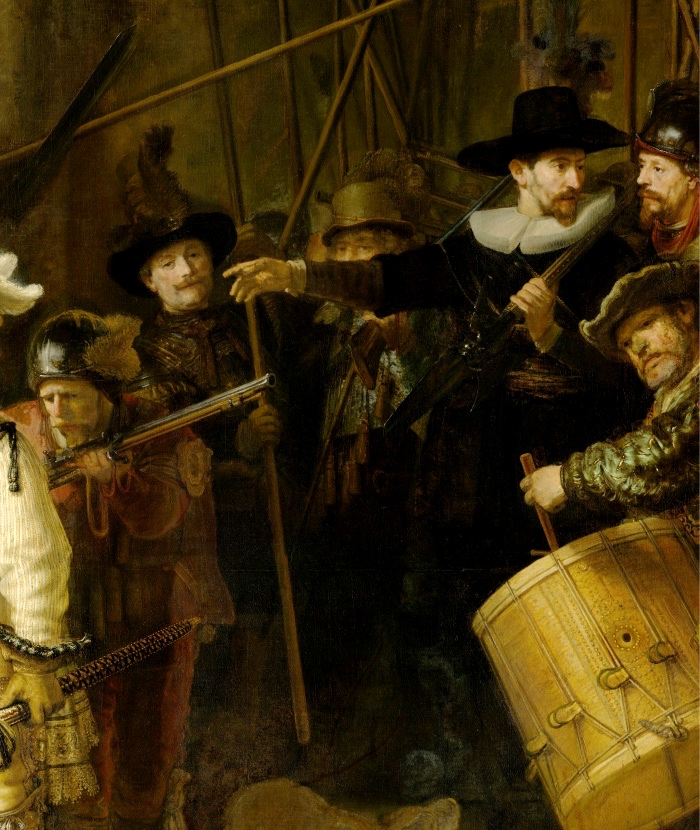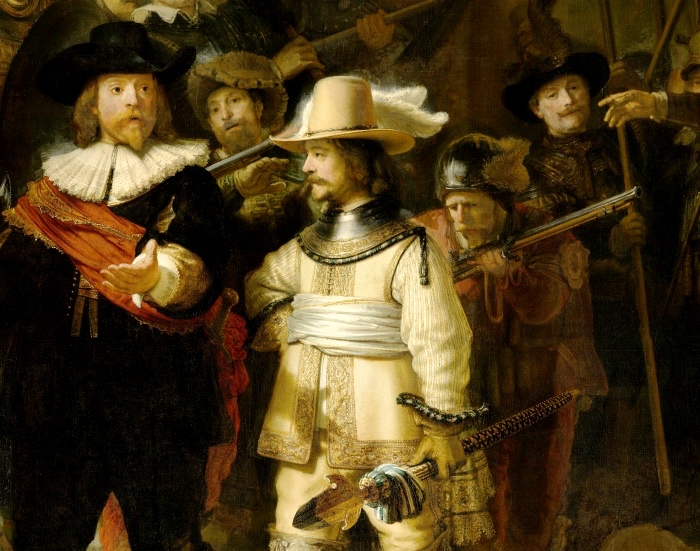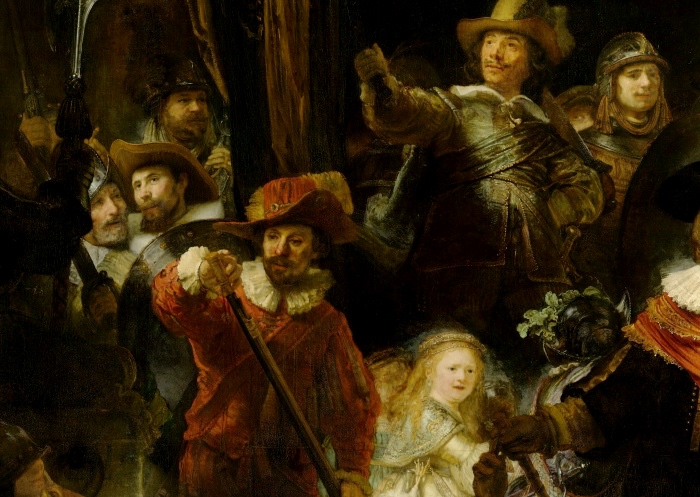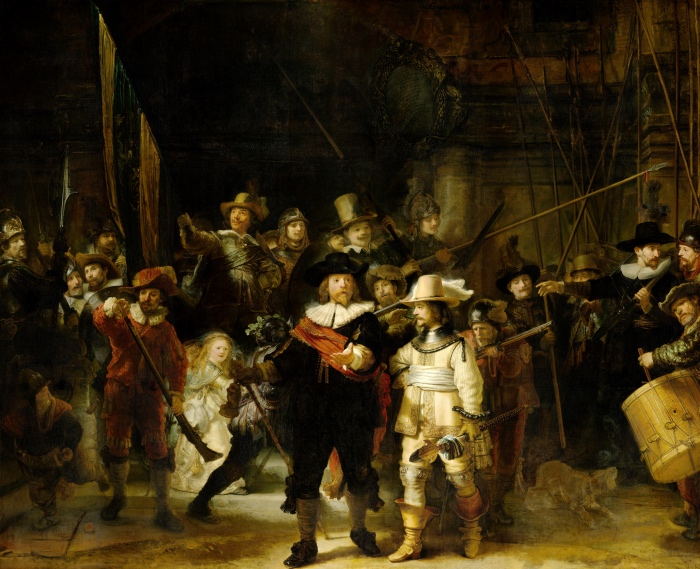The Night Watch
THE NIGHT WATCH
Rembrandt painted The Night Watch in 1640 on commission from the doctor Frans Banning Cocq, who also commanded a company of harquebusiers, the Kloveniers. This painting is Rembrandt’s masterpiece, and the artist was paid 1,600 guilders, and according to the documents, each person portrayed gave him 100 guilders.

The Night Watch belongs to a series of six large paintings of the militiamen commissioned during that time to various artists, and was commissioned on the occasion of the visit of the French queen Marie de’Medici (1639) to celebrate the Civilian Militia, of which the majority of rich notables of Amsterdam were members, and to be exhibited in its seat.
The Night Watch falls within the Dutch pictorial genre of static group portraits, but Rembrandt decided to depict the militiamen moving out. You direct your glance everywhere, and the painting has several layers of meanings and stories intertwining, providing the painting a unique narrative.
The painting is renowned for three features: its big size (363 cm x 437 cm, consisting of three horizontal elements assembled by the artist himself), the effective use of light and shadow, and the perception of motion in what would have traditionally been a static military portrait.
The Night Watch was completed in 1642, when Saskia, Rembrandt’s wife, died, and inserts itself into a turning point in the life of the artist: after the death of her mate a happy time ended, and after the creation of his painting, the artist would face a hard phase of his artistic career. In fact, both the clients and the public didn’t understand that the work was a masterpiece; on the contrary they isolated Rembrandt.
The painter was considered to be too original, and was reproached for not restricting himself to paint what he was commissioned.
Art critics said that Rembrandt painted a painting where he expressed his personal ideas, and didn’t focus enough on portraits, inserting elements and characters that didn’t belong to the scene.
Actually, The Night Watch is a masterpiece because is different from all other paintings they had seen since then.
Rembrandt transformed the group portrait into an action scene, where everyone played a role.


THE NIGHT WATCH: CURIOSITY
The night watch, which is exhibited at the Rijksmuseum in Amsterdam, is missing some parts. A project has reproduced and exhibited them close to the original.
If you want to visit Rembrandt’s masterpiece, remember to book tickets for the Rijksmuseum in Amsterdam.
It seems strange to us today but the practice of cutting canvases was quite common in the past. Rembrandt’s night watch, which is missing some parts, was also a victim.
Rembrandt’s work was cut, in 1715, on all four sides to make it fit into a War Council room in the Amsterdam City Hall. The missing parts have been lost but finally a special project, documented with videos and articles on the website of the Rijksmuseum in Amsterdam, now allows us to see the complete work and how the artist originally made it.
Thanks to a copy made, twelve years after the completion of the painting, by the painter Gerrit Lundens, it was possible to reconstruct the missing parts. It was a project that combined historical research with the study of Rembrandt’s execution technique and which, through specially trained artificial intelligence, made it possible to reproduce the missing images.
Rembrandt’s Night Watch is now visible in its entirety and the cut parts appear on canvas, glued to metal panels, painted and hung next to the original painting. The result gives us an idea of what the composition created by Rembrandt was like.
Follow me on:
About me
In this blog, I don't explain the history of art — I tell the stories that art itself tells.



